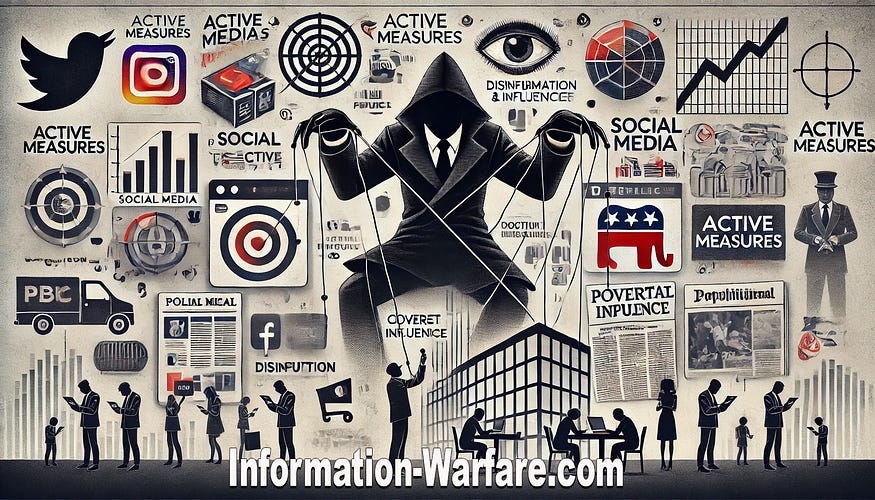Russian Active Measures
The History of Soviet/Russian Active Measures
Active Measures is a term coined by the Soviet Union to describe a range of political warfare techniques used to influence the course of world events. These tactics were employed extensively during the Cold War to spread disinformation, manipulate media, and exert covert influence on foreign governments.

Key Components:
Disinformation: Creating and disseminating false information to mislead and manipulate public opinion.
Propaganda: Promoting Soviet ideology and undermining opposing ideologies.
Political Influence Operations: Infiltrating and influencing political groups and leaders in foreign countries.
Support for Terrorism and Insurgencies: Providing support to radical groups to destabilize adversaries.
Use of Front Organizations: Establishing seemingly independent organizations to covertly advance Soviet interests.
Historical Examples:
Operation INFEKTION: A campaign to spread the false story that the U.S. invented the HIV/AIDS virus as a biological weapon.
Influencing Elections: Supporting and funding political parties and candidates sympathetic to Soviet interests in various countries.
Forged Documents: Creating fake documents to discredit political figures and create political crises.
Post-Soviet Era:
After the collapse of the Soviet Union, Russia has continued to use similar tactics. The advent of digital technology and social media has provided new platforms for these operations, as seen in the interference in the 2016 U.S. presidential election.
Active Measures has evolved but remains a core component of Russia’s strategy to exert influence and undermine adversaries. Understanding its history and methods is crucial for countering these ongoing threats.
Active Measures Today and the Information War
Active Measures in the modern context involve sophisticated strategies to manipulate and influence public opinion, sow discord, and destabilize governments. These tactics have been adapted to leverage digital technology and social media, amplifying their impact and reach.
Key Components Today:
Disinformation Campaigns:
Social Media: Using platforms like Facebook, Twitter, and YouTube to spread false or misleading information quickly and broadly.
Fake News: Creating and disseminating fabricated news stories that align with particular agendas.
Cyber Warfare:
Hacking and Leaking: Breaching sensitive systems to steal information and then releasing it to embarrass or undermine targets.
Botnets and Troll Farms: Deploying automated accounts and coordinated groups to amplify messages and disrupt conversations online.
Influence Operations:
Propaganda Outlets: Utilizing state-controlled media to push specific narratives that support strategic objectives.
Cultural and Ideological Subversion: Supporting fringe movements and ideologies to weaken societal cohesion and trust in democratic institutions.
Political Manipulation:
Election Interference: Meddling in electoral processes to influence outcomes favorable to the manipulator’s interests.
Lobbying and Funding: Covertly supporting political candidates or parties that will advance certain policies.
The Role of Technology:
The rise of digital technology has exponentially increased the effectiveness of active measures. Social media platforms allow for rapid dissemination of information (both true and false), reaching millions instantly and bypassing traditional media filters. Cyber tools enable more covert operations, from hacking political campaigns to manipulating public opinion algorithms.
Case Study: 2016 U.S. Presidential Election
The 2016 U.S. presidential election highlighted the modern use of active measures, where Russian operatives used a combination of cyberattacks, disinformation campaigns, and social media manipulation to influence the election outcome. The goals were to undermine faith in the democratic process, exacerbate social divisions, and tilt the election in favor of a preferred candidate.
Active Measures Today:
Active measures today represent a blend of traditional propaganda techniques and cutting-edge cyber capabilities, making them a potent tool in the information war. Recognizing and countering these tactics is essential for maintaining democratic integrity and national security.

